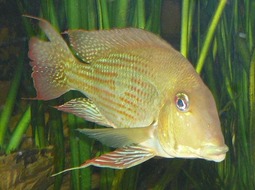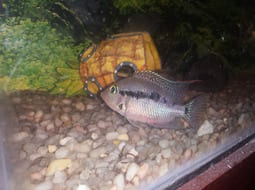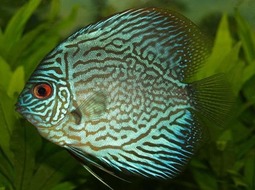
Loading Aqualapp ...
Care and Compatibility of Bicolor Shark - Epalzeorhynchos bicolor
Introduction
The Epalzeorhynchos bicolor, or Bicolor Shark, is a species of freshwater fish native to Southeast Asia, specifically Thailand. It has an elongated and slender body with a distinctive coloration. Its front part is black or dark brown, while its rear part is vibrant gold or yellow. Additionally, it features a diagonal black stripe across its eyes. It can reach a size of approximately 15-20 centimeters in captivity.
Behavior
The Epalzeorhynchos bicolor, also known as the Bicolor Shark or Red-Finned Shark, is a species of fish with active and territorial behavior. It has a lively nature and will constantly swim throughout the aquarium. It can be aggressive towards other fish of similar size or with similar color patterns, so it is recommended to keep them in large groups or pairs to distribute aggression. Providing sufficient swimming space and hiding spots is important for their well-being.
Sexual Dimorphism
Sexual dimorphism in Epalzeorhynchos bicolor is minimal and difficult to distinguish. Both males and females have a similar appearance. During breeding season, they may exhibit more pronounced territorial and courtship behavior.
Reproduction
Reproduction of the Bicolor Shark can be challenging and requires specific conditions. It is an egg-laying fish, and the males are responsible for building nests to deposit the eggs. After spawning, the parents do not provide parental care and may eat the eggs. To increase the chances of successful breeding, it is recommended to provide them with suitable water conditions, such as slightly acidic and soft water, and slightly elevated temperature. It is also important to provide them with spawning sites and hiding places for the fry.
Aquarium Conditions
Epalzeorhynchos bicolor, commonly known as red-tailed black shark or red-tailed shark, requires a spacious aquarium with rocks, driftwood, and hiding spots. It prefers neutral to slightly alkaline water. Aquarium décor should include sandy substrate and hardy plants. Maintaining water quality is crucial and providing a varied diet.
Feeding
The Bicolor Shark is omnivorous and feeds on a variety of foods. In its natural habitat, it primarily feeds on algae, aquatic plants, small invertebrates, and organic debris. In the aquarium, it will accept commercial foods in the form of flakes, pellets, and live or frozen foods such as brine shrimp, daphnia, and mosquito larvae. Vegetable-based foods such as spinach or cooked and peeled peas can also be provided. It is recommended to offer them a balanced and varied diet to maintain their health and vitality.
Complexity
Caring for Epalzeorhynchos bicolor can be moderately challenging. They are territorial fish that may show aggression towards other fish of the same species. It's recommended to keep them in pairs or groups with enough space and hiding spots. They require a balanced diet and a well-maintained environment.
In case you need more help, or if you want to know into any topic related to the Epalzeorhynchos bicolor (Bicolor Shark) and even any other species you can use the forums to ask what you need.
To do an analysis more detailed about coexistence and behavior of Epalzeorhynchos bicolor (Bicolor Shark) use the Aquarium simulation tool, if you do this you can test different ways to combine the Bicolor Shark with other fishes giving the dimensions and space on you aquarium, on this way you can known the optimal configuration for keep the fishes that you want.
You can also find out the 36 species compatible with the Epalzeorhynchos bicolor (Bicolor Shark) can live together.
Note: The parameters of the water such as PH and temperature are also used to calculate the compatibility of the species.
Compatible species (36)
Compatible (6 Species)
Compatible without any restriction
Similar Sizes (2 Species)
They can coexist if they are the same size or very similar sizes, it does not work in all cases, there may be exceptions.
With Reservation (7 Species)
Compatible in some cases, it depends on the nature and personality of the fish.
Las especies territoriales por lo general pueden convivir con especies protegidas con coraza, ya que no pueden hacerles daño por su dura piel, lo que si hay que tener en cuenta es tener un acuario con dimensiones favorables para que cada pez pueda delimitar un territorio, ya que la mayoría de peces acorazados son también peces de fondo y les gusta estar buscando lugares donde ocultarse.
Showdown over territory (10 Species)
Fish can live together as long as the space is spacious enough to delimit a territory, otherwise there may be aggressions for competing for the territory.
Considerable size difference (2 Species)
They can coexist while they are similar in size or the size difference is not very abysmal, since as the fish grows it increases the chances of eating its partner that did not grow much.
Compatible if space is enough (9 Species)
They can coexist together if the aquarium they share is large and spacious enough for both species to feel good, as some fish may attack others to feel that they have little space and try to eliminate the competition.
Bicolor Shark
Epalzeorhynchos bicolor

- Ph: 6.5 - 7.5
- Temperature (c°): 22 - 26
- Measures: 10 cm - 12cm
- Aquarium Capacity:
84 Liters - 22 Gallons - Alimentación: Carnivores, Omnivores
- Colores: Black, Red
- Comportamiento: Active, Aggressive, Likes to take refuge, Peaceful, Territorial, Territorial with its species
- Preferencias del Acuario: Logs, Natural plants, Rocks
- Tamaño: Medium
- Taxonomía: Fish
- Tipo de Agua: Sweet water, Tropical waters
- Velocidad de nado o movimiento: Normal
- Zona de Nado: Swim in the middle of the aquarium

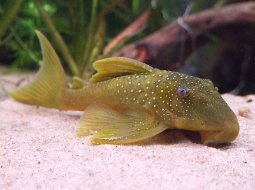

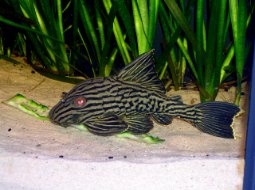




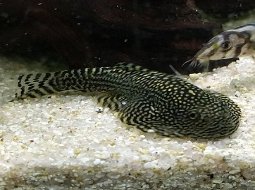


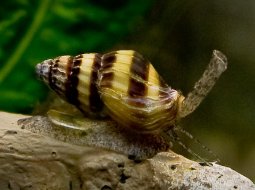





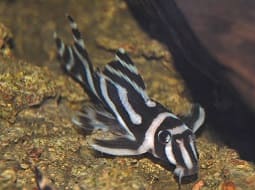

.jpg)
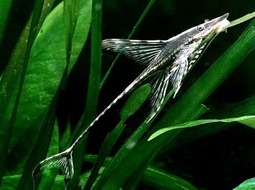








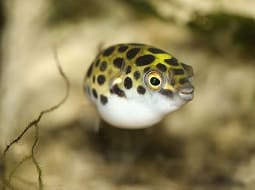
.jpg)
